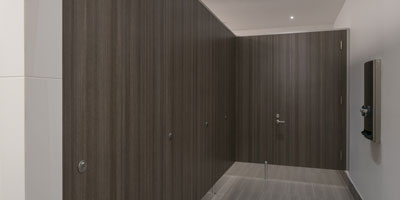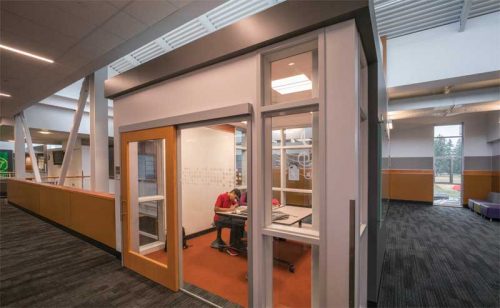New transgender access legislation has transformed privacy from a trend to more of a permanent expectation across a range of building types, from Class A offices to high schools. There are five key categories of restroom privacy solutions, spanning from traditional partitions to single-user individual toilet rooms.
|
As specifiers know, over the last 30 years, the need for improved occupant well-being has given rise to a vast evolution in the world of building design. Dark, dreary, and hard-to-access interiors are bygones of a different era. Transparent, collaborative, and open spaces are now the standard.
|
The 2010 Americans with Disabilities Act (ADA) Standards for Accessible Design has several requirements that continue to surprise architects and specifiers. This article examines changes to door hardware operable force, use of low-energy automatic operators, protrusions into egress, and the need for proper maneuvering clearance.
|
Ensuring architectural door hardware conforms to codes and standards has a close connection with the three essential issues in overall openings performance: accessibility, security, and life safety.
|
|
|







